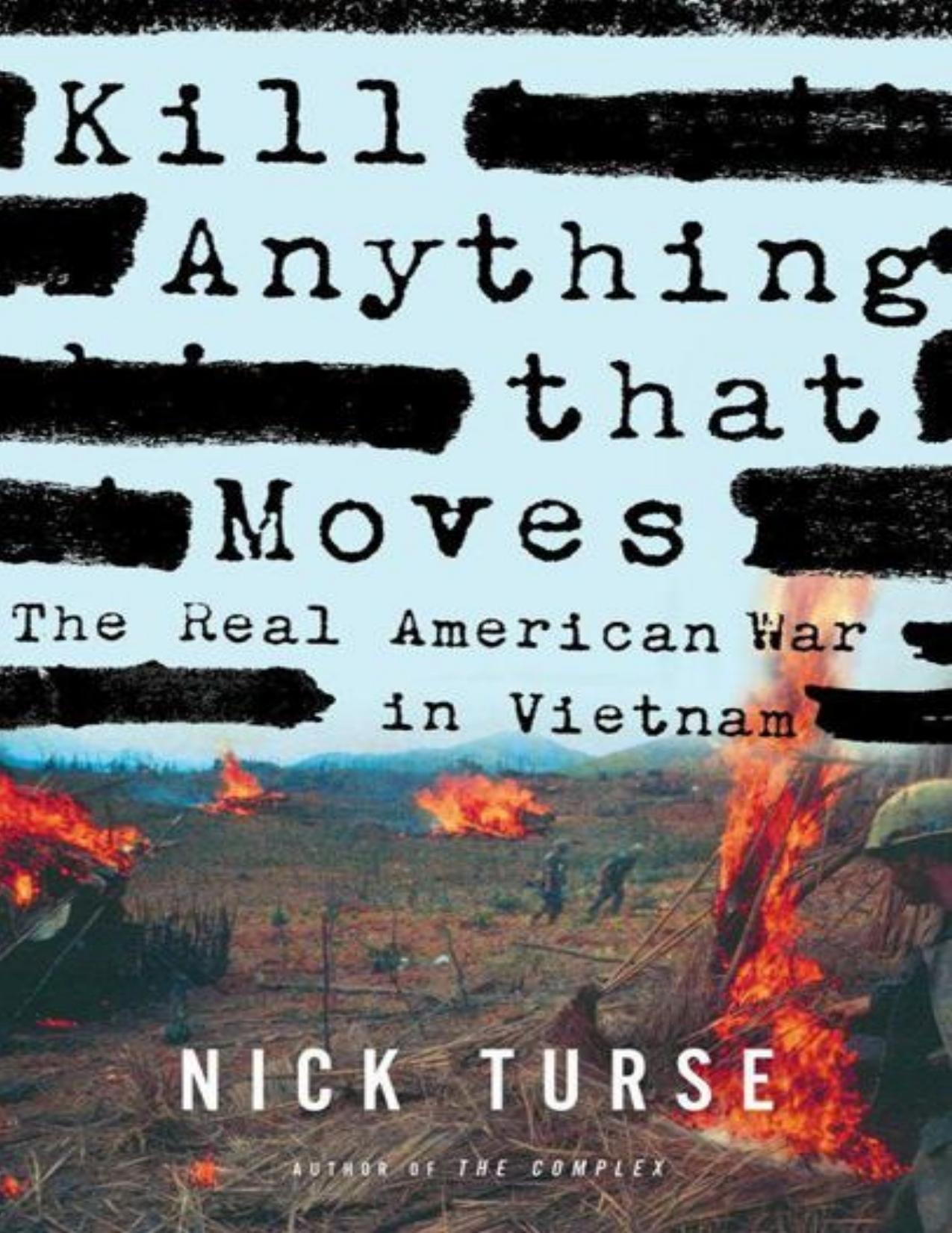Kill Anything That Moves: The Real American War in Vietnam by Nick Turse

Author:Nick Turse
Language: eng
Format: mobi, epub, pdf
Tags: Vietnam War, History
ISBN: 9780805095470
Publisher: Macmillan
Published: 2013-03-31T04:00:00+00:00
In case you don’t think I mean lots of Vietnamese got killed this way, I can give you some idea how many. A battalion would kill maybe 15 to 20 a day. With 4 battalions in the Brigade that would be maybe 40 to 50 a day or 1200 to 1500 a month, easy. (One battalion claimed almost 1000 body counts one month!) If I am only 10% right, and believe me its lots more, then I am trying to tell you about 120–150 murders, or a My Lay each month for over a year.103
In this letter, and two others he sent the following year, the whistle-blower cataloged the various practices that resulted in mass civilian casualties, and explicitly branded David Hackworth and Ira Hunt as war criminals. When Hunt was his brigade commander, the veteran wrote, the colonel was “always cussing and screaming over the radio from his [command-and-control helicopter] to the GIs or the gunships to shoot some Vietnamese he saw running when he didn’t know if they had a weapon or was women or what.”104 As for Hackworth, who had been his battalion commander, the Concerned Sergeant cited his orders when it came to sampans: “I was a RTO [radio telephone operator] and I heard Col Hackworth talking to the gunship pilots, I guess. Anyway, he said there goes a boat. Then I didn’t hear the pilots answer, but then Col Hackworth said I don’t give a shit shoot them anyway women or not. He was very excited and angry and then he called the other company to ambush the boat.”105
The veteran vividly described how the 9th Division’s heavy firepower had wreaked havoc on populated areas. All it would take, he said, were a few shots from a village or a nearby tree line. “If anybody ever got sniper fire from a tree line we’d use gunships and artillery on the villages and go in later,” the Concerned Sergeant wrote.106 “And lots of times we’d be told to call for it even if we wasn’t getting shot at. Then when we’d get in the village there would be women and kids crying and sometimes hurt or dead.”107 He found himself sympathizing with the civilians’ plight because it was clear that they had no escape. “It was their farm land, and it looked like they didn’t have any money to move,” he recalled.108 But the commanders had no such sympathy. The Concerned Sergeant recalled that when his unit’s forward observer would say that regulations forbade firing on a village, the battalion commander would become enraged and declare “contact” with the enemy, which made it permissible to pour artillery fire into populated areas.109
The “number one killer” of civilians, the whistle-blower reported, was the unit’s policy of shooting anyone who ran. “Run from the GIs, run from the gunships, run from the Loaches [LOHs, or light observation helicopters], the gunships and Loaches would hover over a guy in the fields till he got scared and run and they’d zap him. GIs could see people in a field and start toward them and they’d run and get killed.
Download
Kill Anything That Moves: The Real American War in Vietnam by Nick Turse.epub
Kill Anything That Moves: The Real American War in Vietnam by Nick Turse.pdf
This site does not store any files on its server. We only index and link to content provided by other sites. Please contact the content providers to delete copyright contents if any and email us, we'll remove relevant links or contents immediately.
| Africa | Americas |
| Arctic & Antarctica | Asia |
| Australia & Oceania | Europe |
| Middle East | Russia |
| United States | World |
| Ancient Civilizations | Military |
| Historical Study & Educational Resources |
The Radium Girls by Kate Moore(10922)
The Templars by Dan Jones(4197)
100 Deadly Skills by Clint Emerson(4089)
Rise and Kill First by Ronen Bergman(4026)
The Doomsday Machine by Daniel Ellsberg(3741)
The Rape of Nanking by Iris Chang(3530)
Killing England by Bill O'Reilly(3465)
Hitler in Los Angeles by Steven J. Ross(3449)
Stalin by Stephen Kotkin(3094)
12 Strong by Doug Stanton(3064)
Hitler's Monsters by Eric Kurlander(2740)
Darkest Hour by Anthony McCarten(2655)
Blood and Sand by Alex Von Tunzelmann(2614)
The Art of War Visualized by Jessica Hagy(2423)
Hitler's Flying Saucers: A Guide to German Flying Discs of the Second World War by Stevens Henry(2304)
The Code Book by Simon Singh(2222)
The Second World Wars by Victor Davis Hanson(2140)
Babylon's Ark by Lawrence Anthony(2077)
Tobruk by Peter Fitzsimons(2068)
